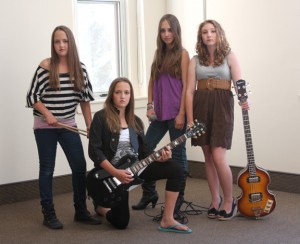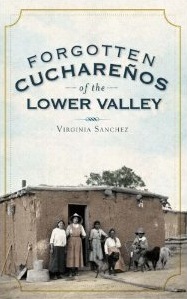Essay and artwork by Patricia Nolan
“Adopt the pace of nature, her secret is patience.” – Ralph Waldo Emerson
Alone, a mile beyond the Mt. Shavano trailhead, my old woman legs need to rest. I sit on a downed log and absorb my surroundings. Cool air, warm sun at 9,500 feet. I look through an old split rail fence that frames an impressionist painting of wildflowers. This June morning, a few crows circle above an aspen grove dotted with Engelmann Spruce, Douglas Fir, and a few Ponderosa Pine. I lower my pack, set up my easel, paints, and brushes, and begin to savor the beauty, knowing my art can never improve this scene. Nor can any art cause us to see the landscape in a new way. Only time spent on location with open eyes and an open heart can do that. I begin to sketch the soul of this place that draws me like a lover.
Going to wilderness is something I do for myself. I go to breathe deeply since age and slowing reflexes are rearranging my priorities. Aging brings its own gifts; I notice more details. Does moving slower create a deeper awareness of my outdoor habitat? Lesser known places have become my spaces of rejuvenation where I go to think, to move, and to hone my senses.
I no longer ski black diamonds at Wolf Creek, run class V rapids in the Royal Gorge, climb fourteeners, fly airplanes, carry a forty pound pack of camera gear, or walk fifteen miles in one day. I am not sure if those were the good old days or not. Maybe life is better now. I am no longer captive to bursts of high energy and adrenaline rushes in between my glacially slow, non-athletic behavior. Never competitive, in the sense that winning is everything, I engaged in extreme adventures simply because opportunities presented themselves. The mountains and rivers came to me early in mid-life, bringing a new strength and courage.
walking unknown terrain
the view at each turn
I ski backcountry on Independence Pass to find solitude in the silent forest, quiet and free places where I once carried that heavy camera pack on snowshoes. Now, I glide on snow simply for the delight of it all.
I still paddle my kayak on quiet waters. Wild rapids no longer hold the old appeal. I loved it, was addicted to it, but now I prefer softer floats that allow time to accept the continuous surprises along the water. Instead of frenetically rigging boats, I make time to chat with a dragonfly hitching a ride on my knee, while water ouzels serenade.
dawn –
river otters tease my boat
into the current
I hike mountain trails on Cottonwood Pass, but no longer trek to high summits. A shorter meander along the lower trails is enough. I have shed deadlines, pressure to get up there and start down before the afternoon thunderstorms, no quick shot that says, ‘see I am here,’ as if a mountain is simply a small ‘X’ on a map. I have time to simply walk and breathe.
along an old deer trail
crow sits on GPS sign
complaining
I haven’t flown an airplane since moving to Colorado decades ago. I survived wind shear in Nebraska and leveling off at 12,500 to fly around Mt. Fuji, but mountain certification seemed too daunting, even if I wore my hat that says No Fear. I always wore that hat when I did something scary. It gave me courage and made other people think I was brave, forcing me to act accordingly. I lost the hat and found courage in the landscape.
My outdoor life has created a visceral need for sustenance and reverie in nature. I am investigating myriad approaches, different pacing, and new interests in soft adventures for an older woman. Monte Vista and Alamosa Wildlife Refuges are compelling sanctuaries. Sandhill cranes have infinite lessons to teach, if we listen.
a hard journey
cranes splash down
safe refuge
A curious nature requires me to question and learn details about what I am seeing. I want to know why the sky is cerulean in summer, turning ultramarine in fall, cement in deep winter when the earth is so white it’s blue. What is the name of that cloud shading Main Street in Buena Vista? Is it necessary to identify a lacunosus? Maybe it is enough to accept the holes in my knowledge, to simply say, “thank-you.”
I add wilderness to humanistic psychologist Abraham Maslow’s hierarchy of basic needs; water, food, shelter. Wilderness allows me to experience higher levels of well-being; belonging, esteem, self-actualization. It enhances and gives me a map to reinvent myself yet again in this latest phase of my life.
When I feel a sense of disequilibrium from the frenzy of city life, I find solace in the woods, on rivers, mountains, and in the desert. I am a visitor. I do not remain. The land remains in my soul – it owns me as no human can ever truly own a piece of land. Sometimes I pocket small pebbles, feathers, a fallen leaf, some pinon nuts, or wild rose hips. At home these things remind me of how deeply I am connected to the earth. On quiet waters, I become the rhythm of eternity. In the high desert, I feel the pulse of the earth validating that I am real. On a snowy St. Elmo trail, I find answers among the bare cottonwood trees.
On my quest for breathing space, I chant my old woman mantra, from Toni Morrison,
“Keep on keepin’ on.”
Patricia Nolan discovered writing about soft wilderness adventures is still a way to avoid city life, since she grew too old to actually go out and do extreme outdoor sports.



